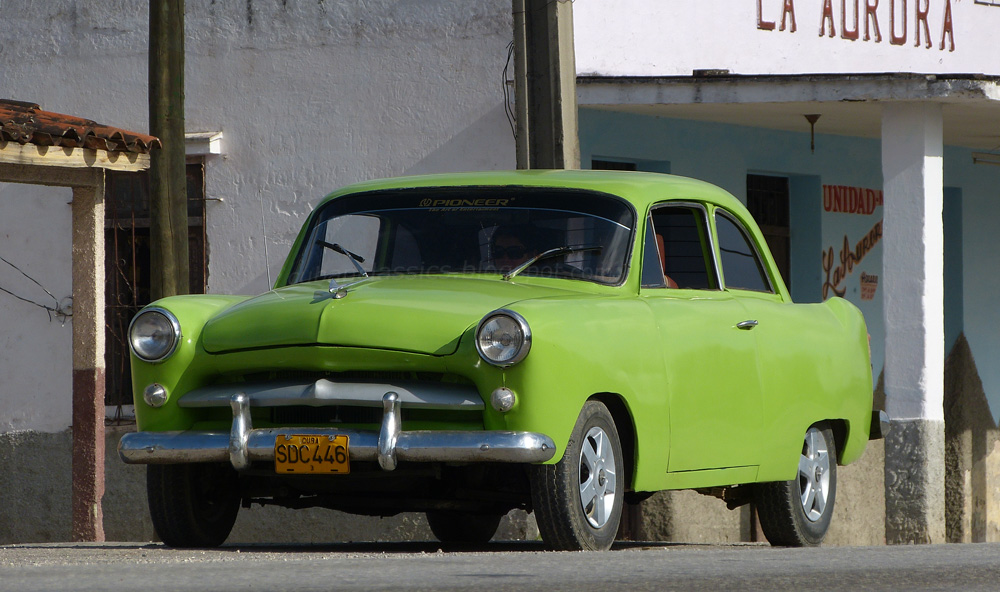
"First Car to Combine Such Luxury With Record Mileage! A blend of aero and auto engineering has created in the Aero Willys a new kind of car! Its ride is so cloud-soft and luxurious, you feel airborne. When you press the accelerator, it almost seems to sprout wings. Yes, this amazing car gives mileage up to 35 miles per gallon in overdrive*! Before you buy any car in any class, drive an Aero Willys."
Built in Toledo, Ohio, this Willys Aero Lark technically ain't exactly Detroit Iron. It looks a bit different, too: unusually wide for a "compact" car, and of elegant line, Willys' entry into the postwar car market was an attractive alternative to other, more spartan, budget car offerings. During World War II, Willys Overland had been extremely successful with the Jeep, but it was already clear that in peace time, the production numbers would diminish. And civil Jeep derivates alone certainly wouldn't create enough revenue to keep the company afloat.
Thus, Willys' boss Ward M. Canaday fostered the development of a passenger car to be introduced in 1952. Designers under Phil Wright and engineers under the lead of Clyde Paton set out to create an affordable, albeit pretty luxurious "small" car, because Willys people were well aware that their first passenger car since 1942 would have a hard stand against the established competition in the full-size car field. The result was a compact, yet handsome and modern looking car, with clean lines and positively constrained use of ornamentation. Because it was based on an all-welded "Aeroframe" unit body design, the car was pretty light, had a good handling, and despite being moderately propelled by its 75hp "Lightning '6' Engine", it had one of the better power-to-weight ratios among American cars of that era. Alongside came a very good fuel economy.
Perhaps the most interesting aspect of the new Willys, though, were its proportions: running on a pretty short 108-inch (2,74m) wheelbase, it was a compact car from stem to stern. But with an overall width of 72-inches (1,83m), it was almost as wide as a fullsize 1952 Plymouth (73.4 inches, 1,86m) or Chevrolet (74 inches, 1,88m). Six passengers, three in each row, could sit comfortably in the Willys. Other compact cars couldn't offer such generous interior space. As the Willys (loaded) stood just 60-inch (1520mm) tall, its wide silhouette looked even more dramatic beside the mentioned competitors that were at least four inches (102mm) taller.
But the ambitious engineering came at a price. The Aero Willys was a budget car by dimensions, but an expensive one to produce. Few customers preferred an Aero Willys over a flashy Chevrolet, Ford or Plymouth which cost just a handful of dollars more, and after Willys merged with Kaiser-Frazer, production ceased after just four years in 1955. The handsome Aero Willys should get a second chance, though: the toolings were shipped to Brazil, where the Aero Willys was produced again between 1960 and 1962.
0 Kommentare:
Post a Comment